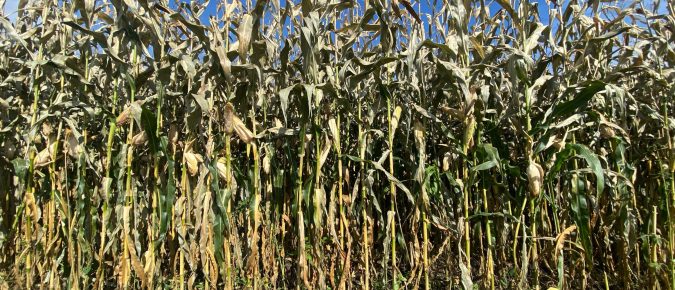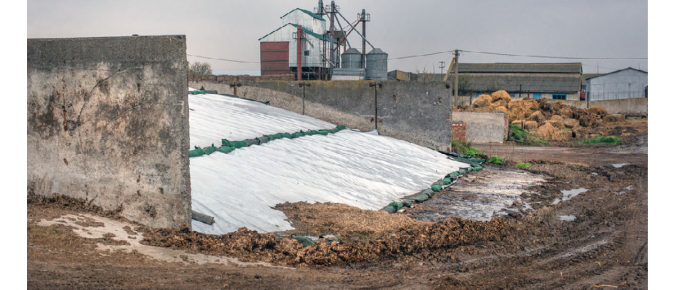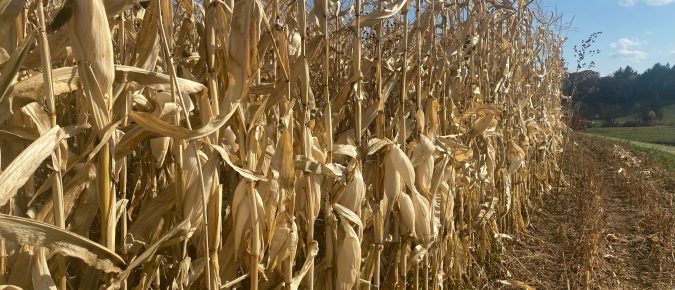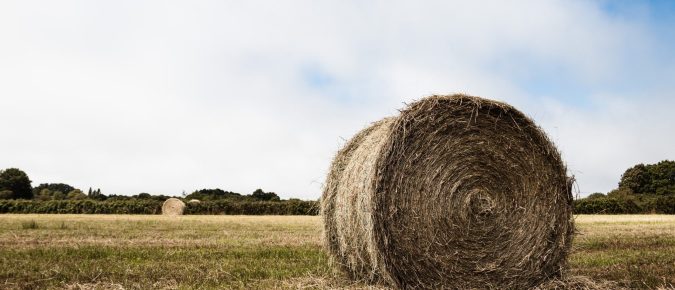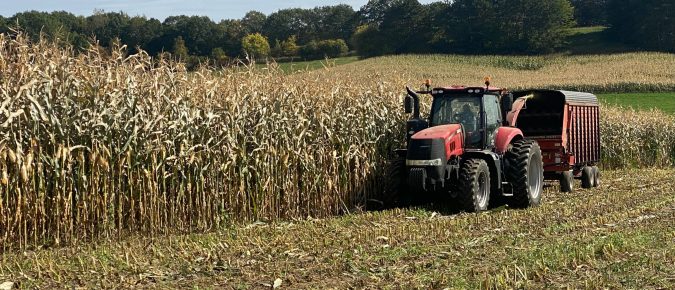Introduction It’s early May, you’re looking at a rather marginal alfalfa stand, the haylage silo is nearly empty, and you generally use some corn silage in the dairy ration. Here are the options: Kill (plow or spray) the alfalfa stand now and plant a full-season corn hybrid, control perennial grasses and broadleaves with a post-emergence […]
Properly constructed, a drive-over silage pile can provide efficient and economical silage storage. Proper design, filling, covering and feed-out is critical for optimizing silage dry matter recovery from a drive-over pile.
It’s early May, you’re looking at a rather marginal alfalfa stand, the haylage silo is nearly empty, and you generally use some corn silage in the dairy ration. Here are the options: What are the advantages and disadvantages of each option? With Option 1, you give-up all alfalfa production on the field for the current year […]
Quality of corn silage is determined by energy content and intake potential as well as content of protein and minerals. Methods used to evaluate corn silage quality include chemical methods such as fiber analysis, biological methods such as fermentation with ruminal microbes, and instrumental methods such as near-infrared reflectance spectroscopy (NIRS) which predicts nutrients rather than measuring them directly.
There continues to be a lot of interest in corn silage harvested with a self-propelled forage harvester (SPFH) equipped with an aftermarket processor having cross-grooved processing rolls set for 2- to 3-mm roll gap and greater roll speed differential than has typically been used (32% versus 21%). Also, the developer of this processor recommends that […]
Increasing starch or neutral detergent fiber (NDF) digestibility in whole-plant corn silage (WPCS) may increase lactation performance by dairy cows or reduce purchased feed costs for dairy farmers.
Pricing corn silage is a difficult decision because it often comes at a time when emotions between sellers and buyers are high. The seller has the opportunity to sell a corn field for either silage or grain and incorporate the fertilizer value of the stover back into the field. The buyer has the opportunity to buy a corn field for silage or buy grain from the market and purchase low quality straw (wheat or corn stover aftermath) to formulate rations.
Most dairy farmers do not have a drive-over scale available on their farms. Frequently it would be useful to know the weight of forage harvested from a field. Measuring alfalfa or corn silage yield is necessary to adjust management practices, to maintain crop inventories, and for crop reporting purposes.
The optimum crop to plant in an emergency forage situation should be determined by 1) when and how it will be utilized, 2) the forage quality needed, and 3) seed availability and cost.
What happens to corn silage yield and quality with later planting dates? The following is a summary of planting date trials conducted at Arlington, WI. The objective of these trials is to measure the impact of planting date on corn forage yield and quality.
Accurately determining corn whole plant moisture is important when harvesting for corn silage. Harvesting corn for silage too early (high moisture content) or too late (low moisture content) can affect forage yield, quality and silage fermentation.

